Frank D. Brown’s Cobs
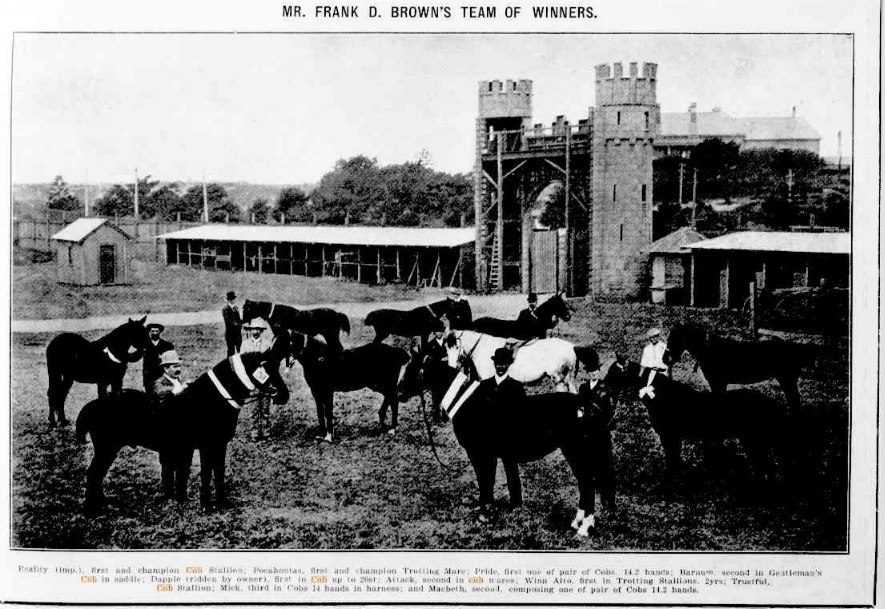
Waler Data Base @ FaceBook. Image: Australian Town & Country Journal, 22nd April, 1908. Some of the cobs Frank took to a Sydney Royal. None were unplaced, most winning. 13 were sold there!
Frank D. Brown bred superlative cobs on his property Pleasant View – 22,000 acres on the upper Monaro – about 10 miles from Kiandra, some of the highest pastoral country in Australia.
Frank’s land ran from 5,000 feet down to 1,600 feet. His main stock were the cobs, and some cattle. He took the stock down to the lower areas for winters – still snowy and tough – the cobs wintered out. Much of his land was steep and forested which is how he liked it, so his horses grew up very sure footed with excellent leg action – very safe after stock in the high country.
In fact his cobs were sought across Australia and also sold overseas such as to India. In the Boer war 1898 – 1902 cobs were the most sought-after army mount, and Australia supplied a lot.
Frank went for cobs as they had tremendous bone and were weight carriers. A docile temperament was very important to him. When he set up his stud – his property in fact was often known as the Almac Cob Stud as his first stallion Almac became highly regarded – money was no object. He sought the best, from Australian breeders and imported several from Britain. He bought Norfolk Cobs and Welsh Ponies, some grew to cob size. He kept his pony and cob studs separate, his ponies kept under 14hh and his cobs under 15hh. Perfect stock horse and utility horse height.
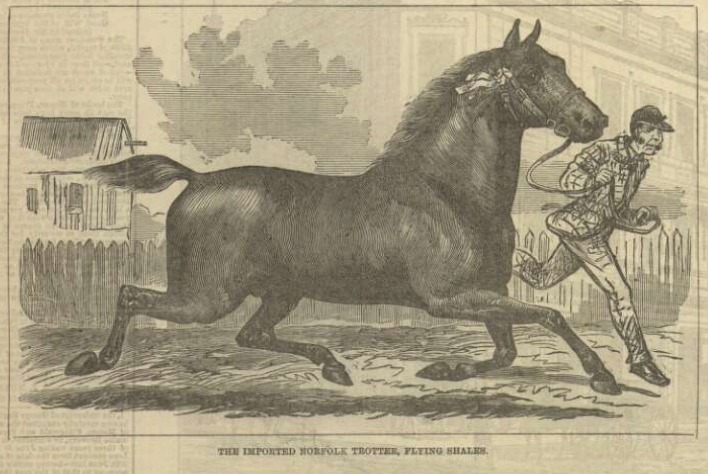
Image: Flying Shales, The Bulletin, 29th October, 1881.
When this horse was imported to Australia he created a sensation. A prime example of the Norfolk Roadster. As galloping on public roads was forbidden in most places, young bloods like to get along at the fastest trot possible, usually in their sporting vehicle, but at times under saddle. Flying Shales was clocked trotting 17 and a half miles in an hour with ease. A flyer! As well he had tremendous bone, a great temperament and iron legs and feet. Frank Brown’s stallion Almac was by Flying Shales, foaled in 1892.
Vim, The Pastoralists’ Review, 15th February 1909.
One of Frank’s cob stallions and a many times show winner. By Detective out of Darwinia (more on their lines under the photo of his full sister Viz).
Vim was a chestnut, 14.2hh. Many show ribbons under saddle and in harness. Worked on the station.
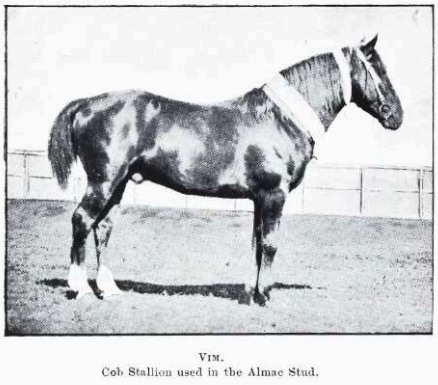

Image: Realist, The Pastoralists’ Review, 15th February 1909.
A Norfolk Roadster/Trotter/Cob imported from Britain to Australia in 1902 by Fell & Hogan of Melbourne. Bought by Frank.
Realist was by Evolution out of Llanfair Lady, she by King Flyer. He was dark brown, 14.2 hands with fast high action.
He won at Melbourne Royal and country shows and was worked on the station at home. He’d won show prizes in Britain, some as a foal with his dam.
For mares he went to a lot of trouble examining breeding and sought Hackney mares with great bone and good linage, buying from C.H. Angus in South Oz and R.W. Wilson in Victoria. He bought over 20 good Hackney mares for broodmares. He also bought good Standardbred and Thoroughbred mares. Again, they had to have bone of 8 inches and over and he looked for Norfolk Phenonemon and Shales lines and a good temperament.
Image: Viz, The Pastoralists’ Review, 1909.
One of Frank’s top mares. A winner in harness and under saddle, and a good brood mare, travelling mare and work horse. She was 14.3hh, sired by Detective (imp) a Norfolk Cob, he by Agility owned by and a favourite of the King of England, tracing straight back to the famous Fireaway horses.
The dam of Viz was Darwinia (imp), she by Evolution going back to the Confidence horse, and her dam side going back to the Fireaways, Viz frequently trotted 25 miles under 2 hours with weight.
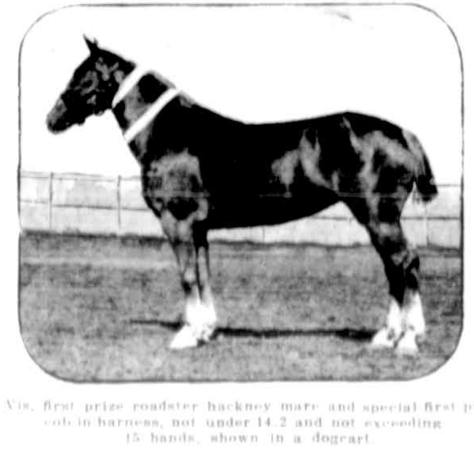
He wouldn’t breed from fillies until they were over three years old, and never in running years – giving them a year or two off, as happens in nature. Docking the tail of cobs was fashionable, but in 1906 Frank decided to only take one joint from a mare’s tail and two from a colt’s. By 1909 he stopped docking altogether.
Frank’s cobs won numerous ribbons. He held an annual muster on the station where he and his staff of mountain men gelded all colts of 2 years old, branded all youngsters with liquid – one of the first to use nitrogen branding rather than fire – and chose which to retain for breeding, and which to send to the Sydney sales. They always sold like hotcakes, for top prices. At any one time Frank had at least 400 cobs plus another 200 ponies running on his property. He had 220 broodmares at any one time, plus youngsters and around 12 stallions.
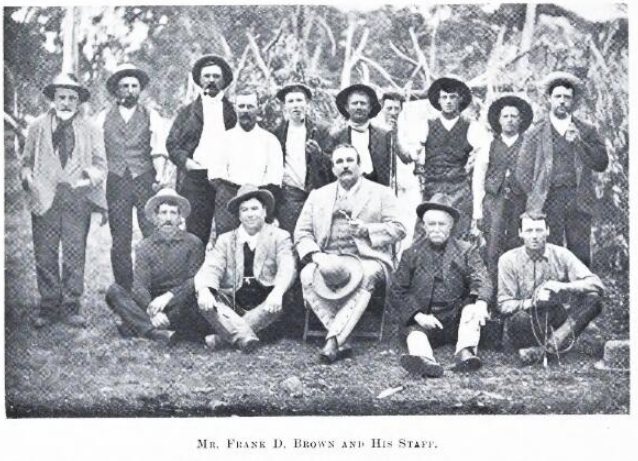
Frank’s main job was General Manager of Singer Sewing Machines in Australia. He’d moved here from New York for the company. His wife stayed there, not liking Australia as Frank did. He was based in Sydney and his staff on Pleasant View did the stock work there exceedingly well and praised the cobs for being able to work under a big man all day in the roughest conditions without knocking up. Feet and legs of iron. Frank helped when he could, he also drove and rode his cobs at shows.
Norfolk cobs were also known as Norfolk Trotters and Norfolk Roadsters.
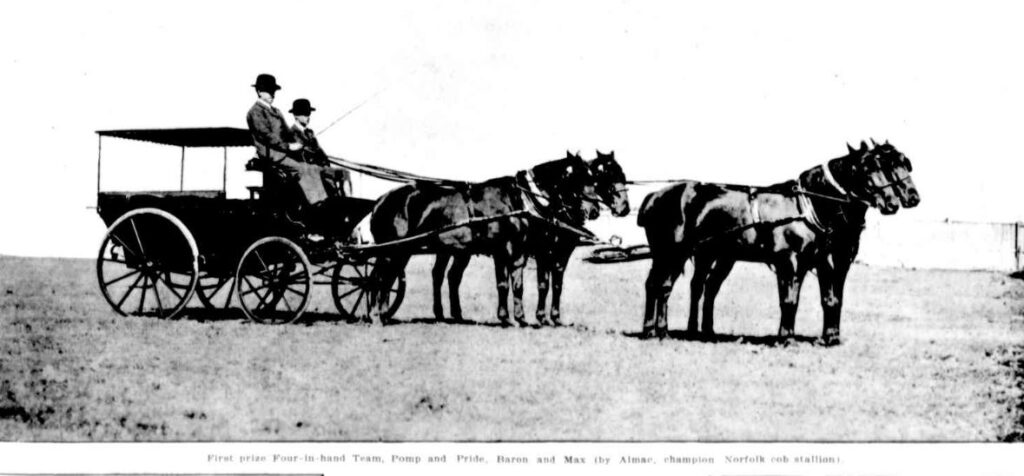
Image: Australian Town & Country Journal, 3rd April 1907. Frank’s team won the Four-in-hand class at Sydney Royal. They were Pomp and Pride, and Baron and Max. All were by his stallion Almac, by Flying Shales out of Gipsy.
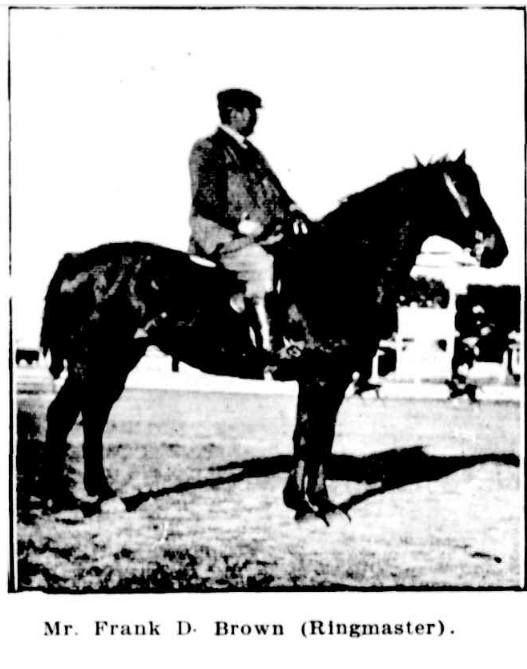
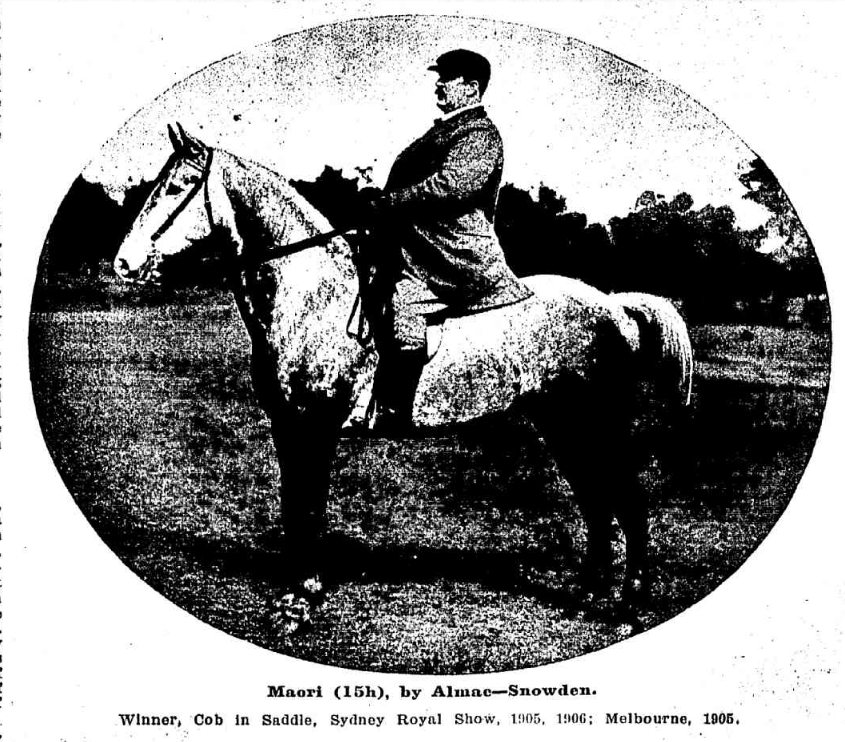
Images: Australian Town & Country Journal, 14th August, 1907. Sydney Royal. Frank was much praised as an excellent Ringmaster; Frank on Maori, Australian Town & Country Journal, 15th August 1907.
Anyway things went belly-up for Frank. In 1912 Frank Denison Brown was arrested for bankruptcy, it appeared Singer found a few discrepancies with monies. The legal case dragged on. His farm was seized and sold for a fraction of its worth. At the time – 1912 – there only happened to be 75 ponies and 100 cattle on the 22,000 acres. Yes ok,. Some rather magnificent brumbies were seen at the time, and many in subsequent years mustered and driven to sales, many going to the Light Horse in 1914 and through WW1. Frank’s cobs had tremendous bloodlines, easily among the best in the world, a unique heritage of the best of British blood before the Thoroughbred and other light breeds took over.
Don’t know what became of Frank, he was very much liked here, honest in all his dealings, and a top horseman, in those days the way to an Australian’s heart. If anyone knows please share. Hope he had a happy life after 1912. Many of his horses were known to have joined the wild bush horses of the area: we would love to hear about horses captured in the Snowy Mountains region so we can check DNA/photos and history for possible recording on our website.